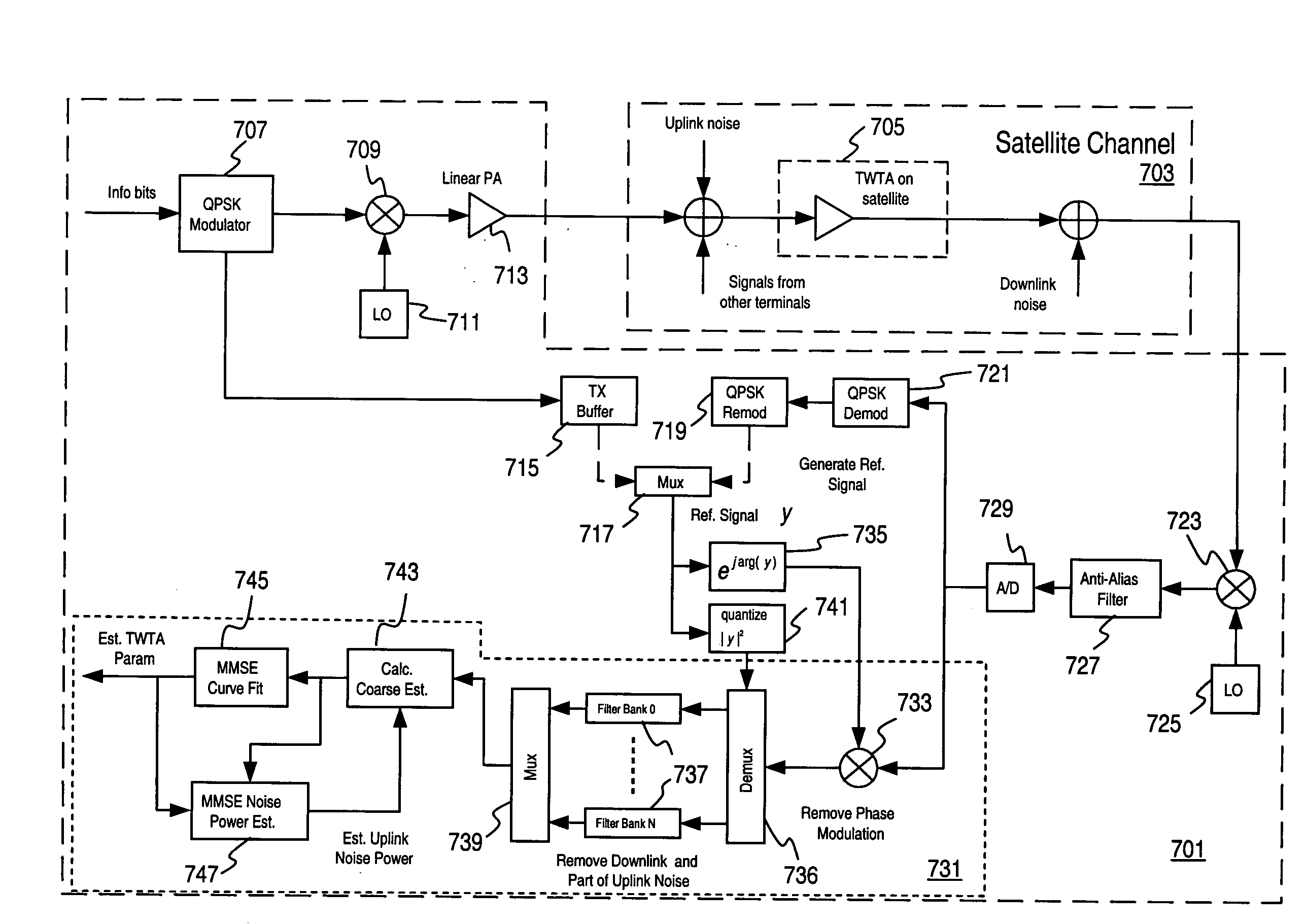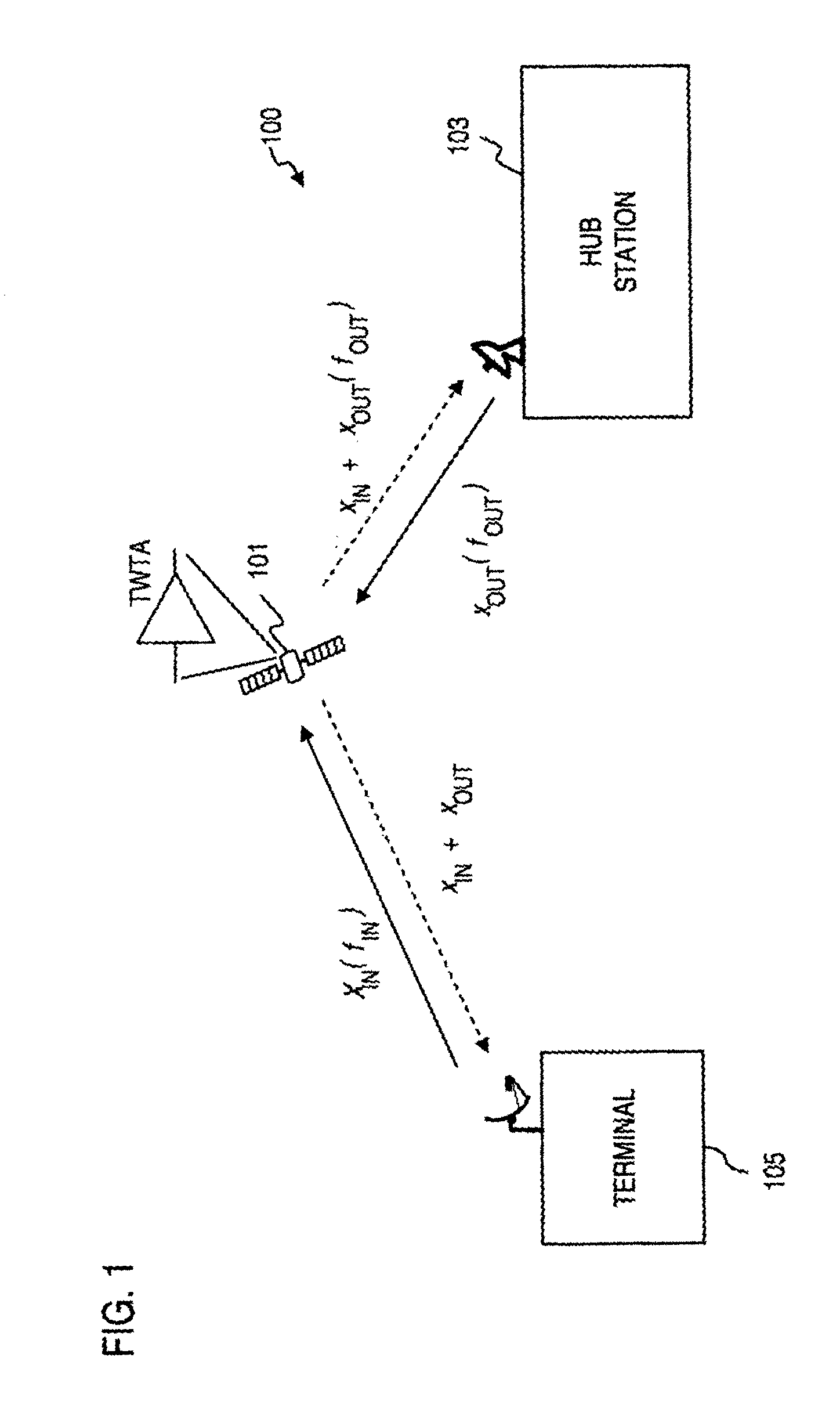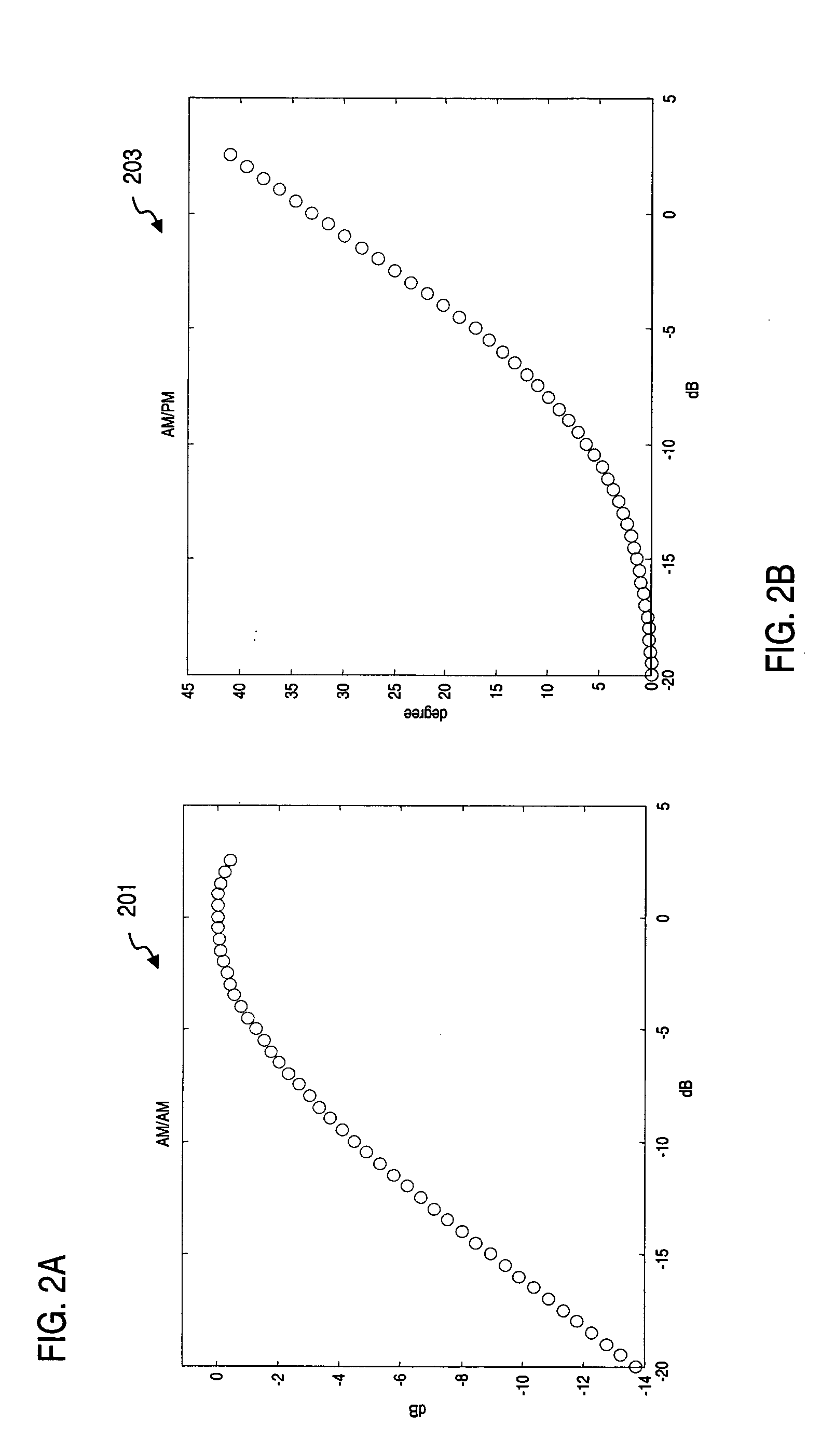Method and apparatus of estimating non-linear amplifier response in an overlaid communication system
a communication system and amplifier technology, applied in the field of communication systems, can solve the problems of system capacity constraint, system capacity increase, and system service disruption, and achieve the effects of accurate estimation of amplifier response, accurate reconstruction of received signals, and removal of bias
- Summary
- Abstract
- Description
- Claims
- Application Information
AI Technical Summary
Benefits of technology
Problems solved by technology
Method used
Image
Examples
Embodiment Construction
A method, apparatus, and software for estimating non-linear characteristics of an amplifier used to amplify a composite signal in a radio communication system, are described. In the following description, for the purposes of explanation, numerous specific details are set forth in order to provide a thorough understanding of the present invention. It is apparent, however, to one skilled in the art that the present invention may be practiced without these specific details or with an equivalent arrangement. In other instances, well-known structures and devices are shown in block diagram form in order to avoid unnecessarily obscuring the present invention.
Although embodiments of the present invention are explained with respect to a satellite communication system, it is recognized that the present invention can be practiced in any type of radio communication system, including a microwave systems, cellular systems, packet radio networks, etc.
FIG. 1 is a diagram of a radio communication ...
PUM
 Login to View More
Login to View More Abstract
Description
Claims
Application Information
 Login to View More
Login to View More - R&D
- Intellectual Property
- Life Sciences
- Materials
- Tech Scout
- Unparalleled Data Quality
- Higher Quality Content
- 60% Fewer Hallucinations
Browse by: Latest US Patents, China's latest patents, Technical Efficacy Thesaurus, Application Domain, Technology Topic, Popular Technical Reports.
© 2025 PatSnap. All rights reserved.Legal|Privacy policy|Modern Slavery Act Transparency Statement|Sitemap|About US| Contact US: help@patsnap.com



